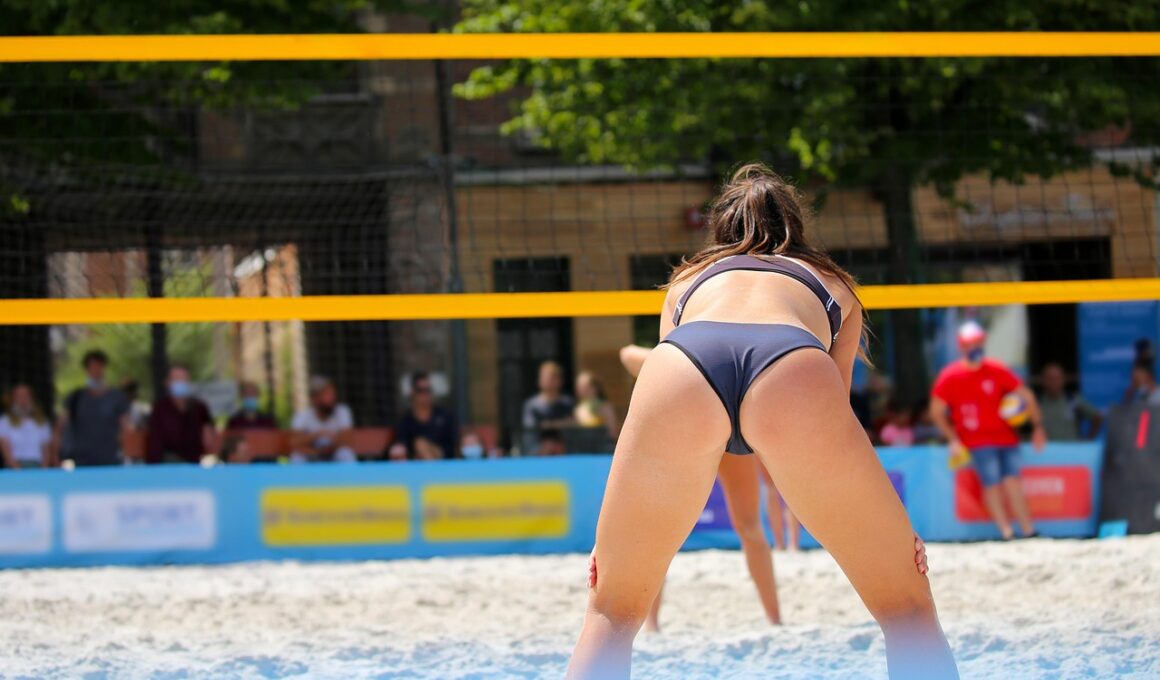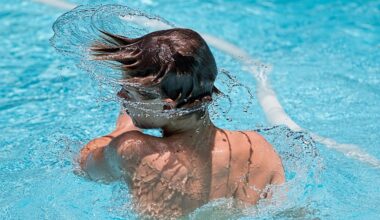Defensive Coverage: Protecting Your Court Like a Pro
In volleyball, strong defensive coverage is crucial for success. To effectively protect your court, players must understand various defense strategies. These strategies include proper positioning, communication, and anticipation of the opponent’s moves. Effective defensive teams maintain a balance between individual skills and a cohesive unit. Training consistently allows players to develop skills that enhance their overall performance. One fundamental strategy is the perimeter defense, where players position themselves to cover zones efficiently. This positioning minimizes gaps that the opposing team can exploit. A dedicated focus on footwork drills also strengthens reach and agility, allowing defenders to react swiftly to incoming attacks. Additionally, practicing diving techniques can enhance a player’s ability to save hard-driven balls. Communication is key in maintaining coverage, with verbal calls indicating intentions. Players should learn to recognize cues from teammates, which can predict movement and response. Building trust among players helps to improve overall defensive energy and rhythm. Lastly, analyzing game footage after matches can provide insights into defensive weaknesses that need addressing during training sessions. This continuous cycle of learning and adapting ensures that defensive strategies evolve as teams face new opponents.
Understanding Positioning and Zones
Effective defense in volleyball begins with understanding court positioning and zones. Players must be aware of assigned areas and strive to cover them proficiently. Traditional defensive strategies typically divide the court into three major zones: the left front, middle front, and right front. Each player must master their designated zone to minimize unguarded spaces. When players adopt proper positioning, they can anticipate offensive plays and respond accordingly. Defensive players should also identify the strengths and weaknesses of attackers, adjusting their positions based on those observations. Moreover, players must work on developing an intuitive understanding of when to shift positions in response to opponents’ movements. For instance, if the opponent’s key hitter consistently targets a specific area, defenders should be ready to adjust their positions accordingly. Additionally, utilizing a staggered positioning can allow for better coverage, as it provides a safety net for teammates. Conducting drills focused on repositioning helps players remain agile and adaptable during matches. Incorporating various strategies during practice encourages flexibility and creativity among players, enhancing overall performance. The goal is to establish a robust defensive line that consistently adapts to any offensive threat presented by the opposing team.
Another significant aspect of defensive strategies is mastering the art of reading the game. To be an effective defender, players need to enhance their court awareness and ability to anticipate the opponent’s moves. By observing the set position of the ball and the hitter’s approach, defenders can make informed decisions to prepare for an attack. Visual cues and studying the body language of opposing players are instrumental in developing a strong reading ability. This insight creates opportunities to position themselves favorably and mitigate the impact of powerful spikes. Communication among teammates further boosts defensive effectiveness, ensuring everyone is in sync with their movements. Regular practice helps cultivate the habit of shouting out cues like “mine” or “help,” allowing for clear identification of who will make the play. Players should also engage in drills that focus on reading different types of shots, aiding their adaptability in diverse scenarios. Keeping the mind alert to evolving game situations enhances individual confidence. This strategic mindset empowers players to contribute significantly to team defense, ultimately increasing the likelihood of successful opportunities during match play and creating a resilient defense.
Utilizing Different Defensive Systems
Understanding various defensive systems is essential for volleyball teams aiming for excellence on the court. Two primary defensive systems are the “six-man defense” and the “libero defense”. The six-man defense involves all players alternating between offensive and defensive roles. This strategy emphasizes team collaboration, as each player contributes to court coverage. On the other hand, the libero defense focuses on utilizing a specialized player, known as the libero, whose sole responsibility is defensive play. This flexibility permits the remaining players to concentrate on their attacking roles. Teams must determine which system complements their style of play and the strengths of individual players. Additionally, having a robust libero can significantly elevate the team’s overall defensive performance. Libero players typically possess exceptional ball control skills and are trained to dig out tough shots. Incorporating a libero into the strategy allows other players the freedom to attack without worrying excessively about defense. Along with the chosen system, regular drills that simulate real-match situations can reinforce these strategies, solidifying players’ abilities and enhancing team coordination. Through consistent training, coaches can refine these systems to develop a cohesive unit prepared for competitive play.
Cultivating mental toughness is another vital element in enhancing volleyball defense. Defenders often face pressure during matches, making the ability to stay focused and composed essential for success. Mental resilience lowers the impact of stress during pivotal points in games. Players can develop combat mentality through various practices, including visualization techniques and positive affirmations. By mentally rehearsing successful defensive plays, players can enhance their readiness for on-court situations. They should also engage in reflective practices after matches to evaluate their performance and learn from mistakes. Analyzing both successful and unsuccessful plays fosters a growth mindset, which is crucial for ongoing improvement. Furthermore, building team morale and positive relationships among players contributes to a supportive environment. When players feel valued, they are more likely to remain motivated during challenging scenarios. It’s also essential for coaches to reinforce a culture that embraces mistakes as learning opportunities rather than failures. This approach leads to stronger emotional resilience within the team, increasing overall performance consistency. Encouraging open communication, constructive feedback, and fostering a healthy rivalry among teammates can drive individual players to develop skills further and enhances overall team effectiveness.
Practical Drills for Improving Defense
Implementing effective drills is crucial for fostering strong defensive skills among volleyball players. Regular practice allows players to refine their techniques and solidify their understanding of various defensive concepts. One essential drill is the ‘digging drill,’ where players practice receiving spikes and digging low balls effectively. Setting up scenarios that simulate in-game pressure encourages players to react quickly and develop muscle memory. A second crucial drill is the ‘wall drill,’ where players work on their passing and communication skills when under pressure. This drill helps defenders understand where they should position themselves on the court and heightens their court awareness. Incorporating partner drills, such as the ‘two-ball drill,’ allows multiple players to practice their defense simultaneously. This drill emphasizes fast reactions and teamwork as players focus on covering their respective zones while maintaining effective communication. Coaches should also design drills that foster game-like situations, allowing players to transition between defense and offense smoothly. Ultimately, consistent practice of diverse drills enhances player readiness, contributes to overall team effectiveness, and cultivates an environment conducive to improvement. Achieving proficiency in these core drills lays the foundation for exceptional defensive capabilities during competitive games.
In conclusion, mastering defensive coverage in volleyball is a multifaceted endeavor that requires commitment and practice. Understanding defensive strategies, positioning, and reading the game forms the foundation of effective court protection. Additionally, different defensive systems enable teams to organize themselves cohesively, enhancing performance and adaptability. Cultivating mental toughness among players further strengthens their defensive abilities, especially under pressure. Implementing practical drills that simulate game situations allows players to refine their skills and develop competencies essential for overall success. Players must engage with teammates effectively, ensuring clear communication in all situations. Coaches play a pivotal role in developing strong defensive strategies and fostering a healthy team environment. Regular assessment of collective and individual performances will contribute significantly to continuous improvement. By focusing on these areas, players can elevate their defensive skills, contributing to the team’s success on the volleyball court. The journey towards becoming a defensive powerhouse relies on consistent effort, communication, and adaptability to face new challenges. As players grow in their defensive prowess, the entire team benefits, creating a strong, unified unit prepared to take on any opponents that arise during competitive play.


